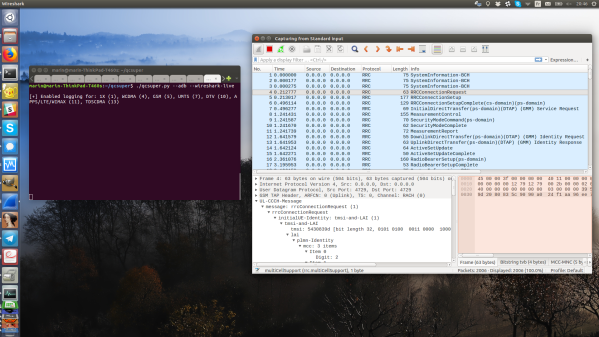Some parts of the world still have ample 2G coverage; for those of in North America, 2G is long gone and 3G has either faded into dusk or beginning its sunset. The legendary [dosdude1] shows us it need not be so, however: Building a Custom 2G GSM Cellular Base Station is not out of reach, if you are willing to pay for it. His latest videos show us how.
Before you start worrying about the FCC or its equivalents, the power here is low enough not to penetrate [dosdude]’s walls, but technically this does rely in flying under the radar. The key component is a Nuand BladeRF x40 full-duplex Software Defined Radio, which is a lovely bit of open-source hardware, but not exactly cheap. Aside from that, all you need is a half-decent PC (it at least needs USB-3.0 to communicate with the SDR, the “YateBTS” software (which [dosdude1] promises to provide a setup guide for in a subsequent video) and a sim card reader. Plus some old phones, of course, which is rather the whole point of this exercise.
The 2G sunset, especially when followed by 3G, wiped out whole generations of handhelds — devices with unique industrial design and forgotten internet protocols that are worth remembering and keeping alive. By the end of the video, he has his own little network, with the phones able to call and text one another on the numbers he set up, and even (slowly) access the internet through the miniPC’s network connection.
Unlike most of the hacks we’ve featured from [dosdude1], you won’t even need a soldering iron, never mind a reflow oven for BGA.













